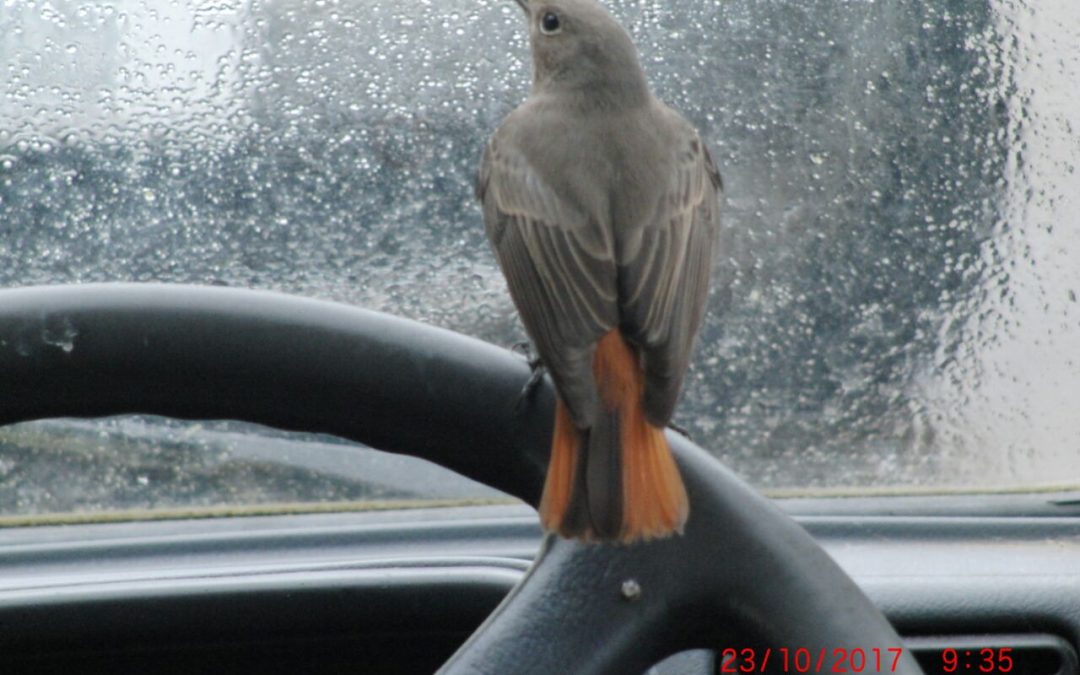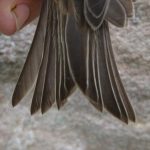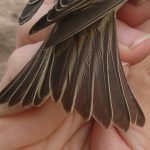A fantastically busy week of thousands of birds passing through, amazing birding and ringing experiences that only islands such as this can offer. Though the week began with storm force conditions we went on to benefit from the odd spell of North and North-east winds that brought us bird migration at its best. Over 5 straight days and despite limited resources, over 1000 birds were ringed. Towards the end of the week invasions of Redwings and Chaffinches brought with them Bramblings and Hawfinches along with some more unusual vagrants.
23rd – A House Martin in Longis Bay along with a handful of Swallows. June and Nigel Visard got into their van this morning and sheltering from the stormy conditions this wonderful Black Redstart that appeared to be happy to share the dry conditions.
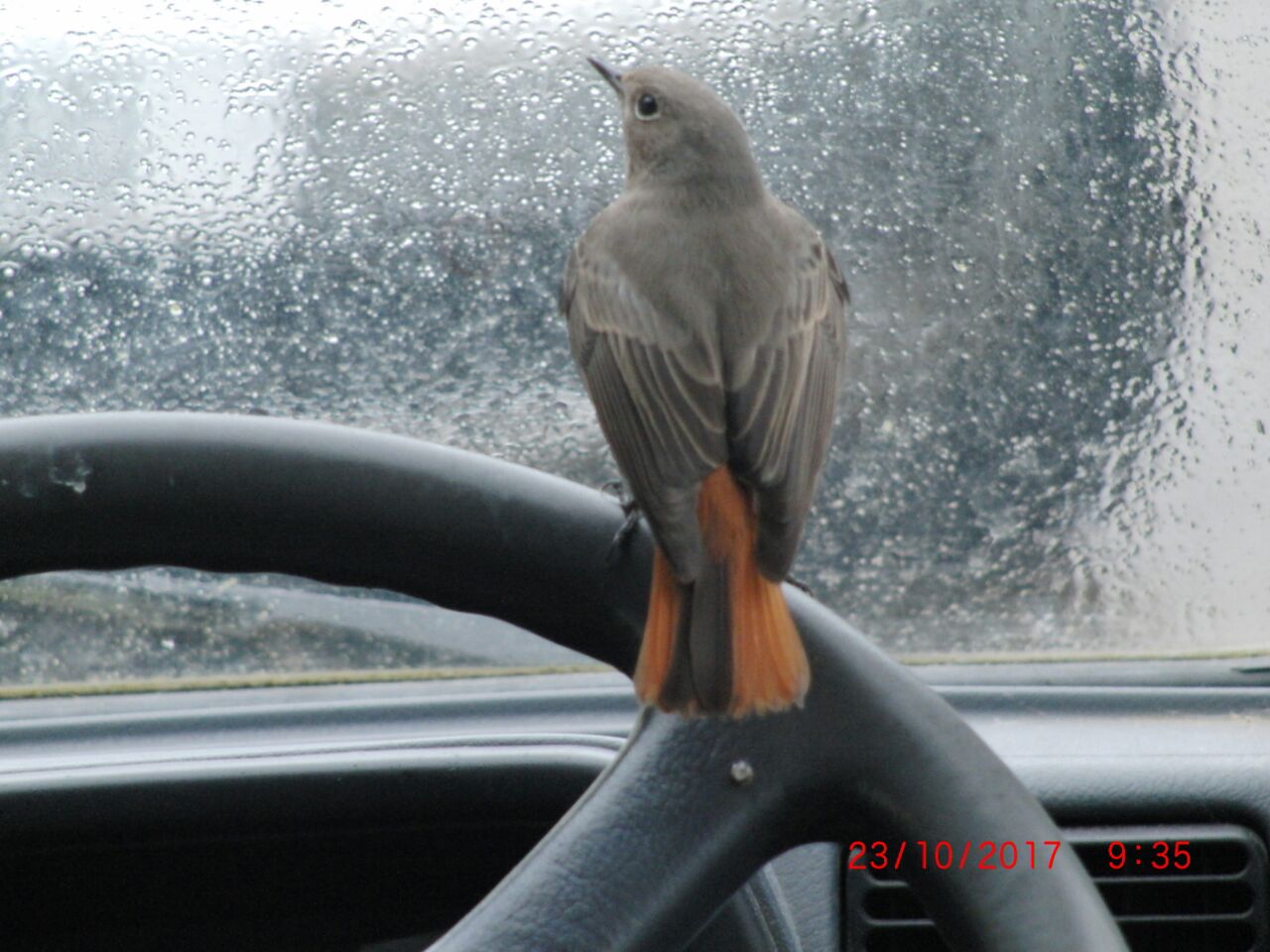
Black Redstart – Longis Bay – photo – Nigel Visard
24th,
Strong winds from the north-west during the morning hampered a late light passage of Swallows involving around 50 birds through. Migrant passerines ringed at Essex farm in the afternoon included Blackcaps, Chiffhcaffs, Goldcrests and Firecrests, of the latter species we have now ringed over 200 ringed this autumn. On the Obs ramparts another Black Redstart.
25th – A Marsh Harrier over Rose Farm. The afternoon saw an dramatic invasion of Goldfinches with some 500 birds in the vicinity of barrackmasters lane. At lunch time there were around 50 Swallows and 2 House Martins on telegraph wires by the frying pan headland. Then followed an amazing 1pm-4pm ringing session using just 2 nets which saw 159 Goldfinches ringed ! A late roost of Swallows at Longis reserve involved at least 150 birds.
26th – Marsh Harrier over Barrackmasters Lane. Again a light but steady passage of Swallows all day. Just before dusk 2 Jack Snipe showed well right in front of Longis nature reserve hide, a Grey Wagatil was also present at the pond. Good numbers of migrants over Rose farm included 20 Skylarks, 40 Siskins and 1000+ Chaffinches. Ringing topped 200 birds again, the highlight a female Hawfinch at Rose farm. Ringing concluded with 17 Swallows at roost on longis reserve.
27th- The winds turned North east overnight and we had a cracking days ringing returning 239 new ringed birds. Two surprises came in the shape of extremely late moving migrants, a Garden Warbler and Lesser Whitethroat. The latter pictured below is an extremely pale brown individual, we considered ssp minula but wing formulae measurements were inconclusive. I’ve certainly never seen one this pale and suspect it to be the eastern superspecies. Redwing (38) and Song Thrush (15) were ringed between Rose Farm and Mannez Quarry. At Mannez visible migration included included 3 Woodlarks, 40 Siskin, 1000+ Redwing & 15 Skylark.
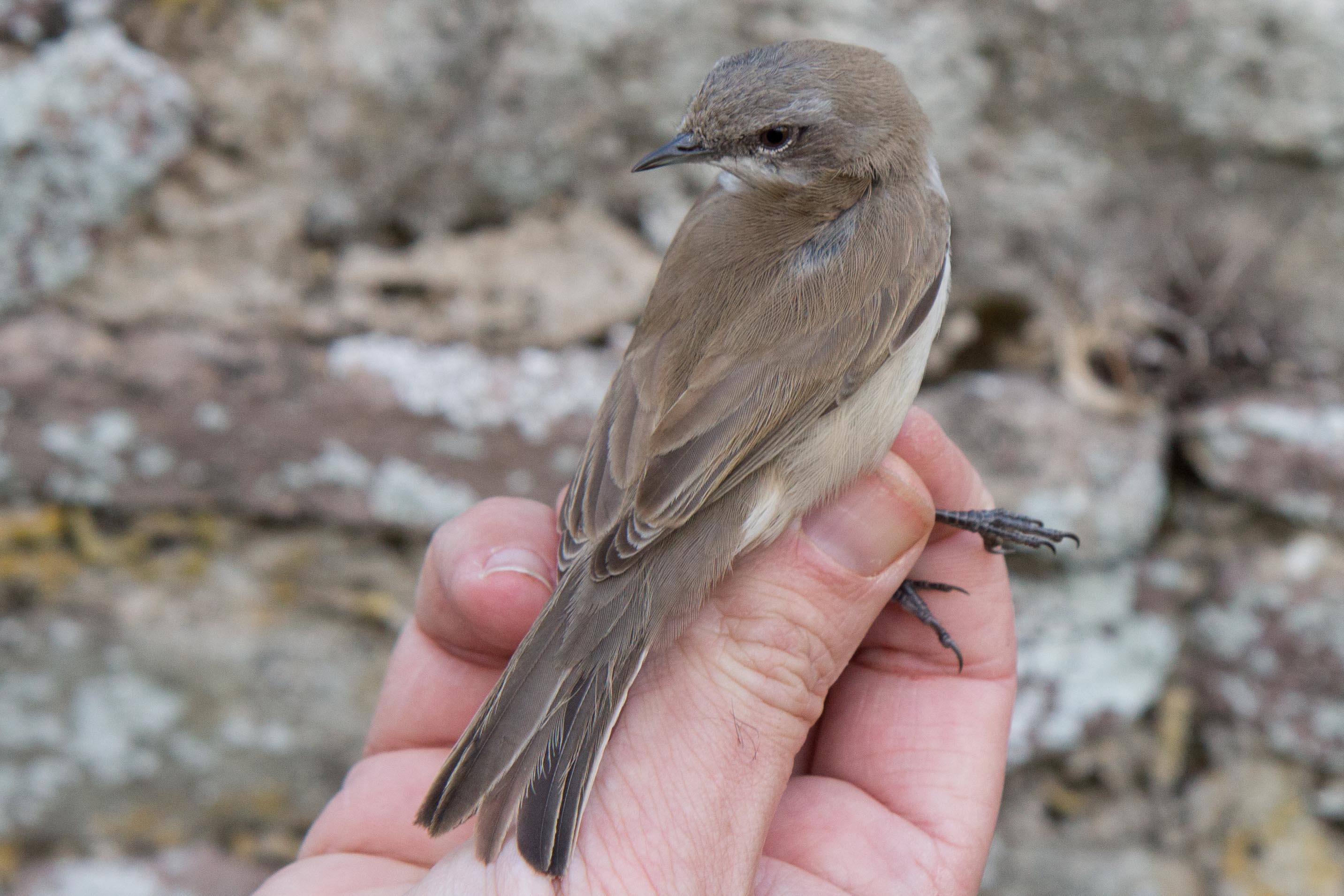
Lesser Whitethroat – Essex Farm – photo – JH – ABO
28th, Hen Harrier in off the sea in Longis bay. An influx of Fieldfares, some 500 over the observatory between 7 & 9 am & at the same time 1 ringed at Longis nature reserve. A busy days ringing saw over 250 birds ringed including a first winter female Penduline Tit at Mannez quarry and a Yellow-browed Warbler ringed at Essex farm along with 4 Lesser Redpolls. Migration overhead also included 2 Bramblings over the Obs (2 were also ringed in Barrackmasters lane) . At Mannez visible migration involved 1000+ Redwings, an estimated 100 Siskins and 4 Hawfinches. A flock of 9 Stock Doves were on Longis common and 2 Sandwich Terns fished Longis bay. Bullfinches have been more frequent this autumn, this fine male pictured below ringed at Essex farm during the afternoon.
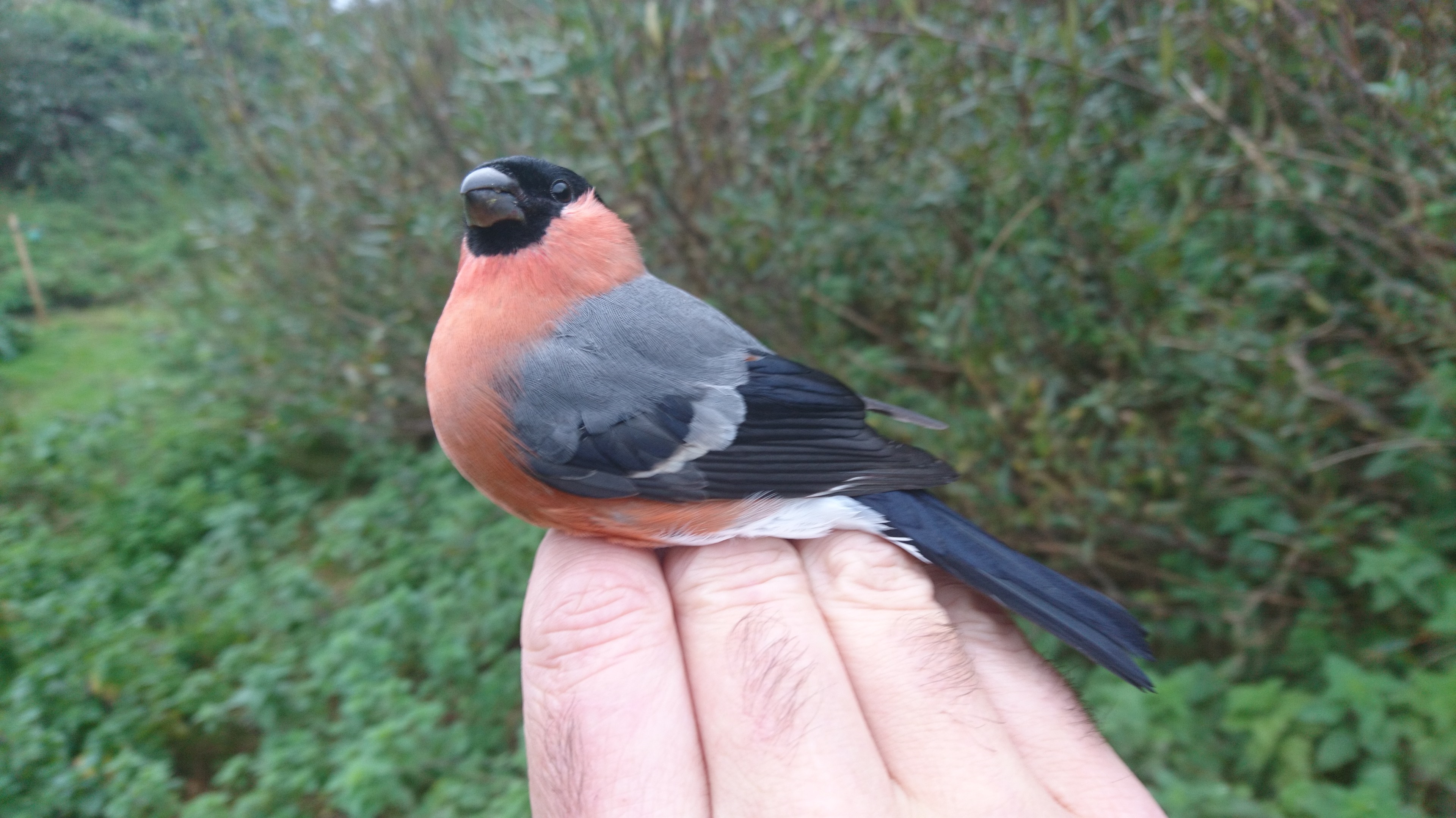
Male Bullfinch – Essex Farm – photo – JH – ABO
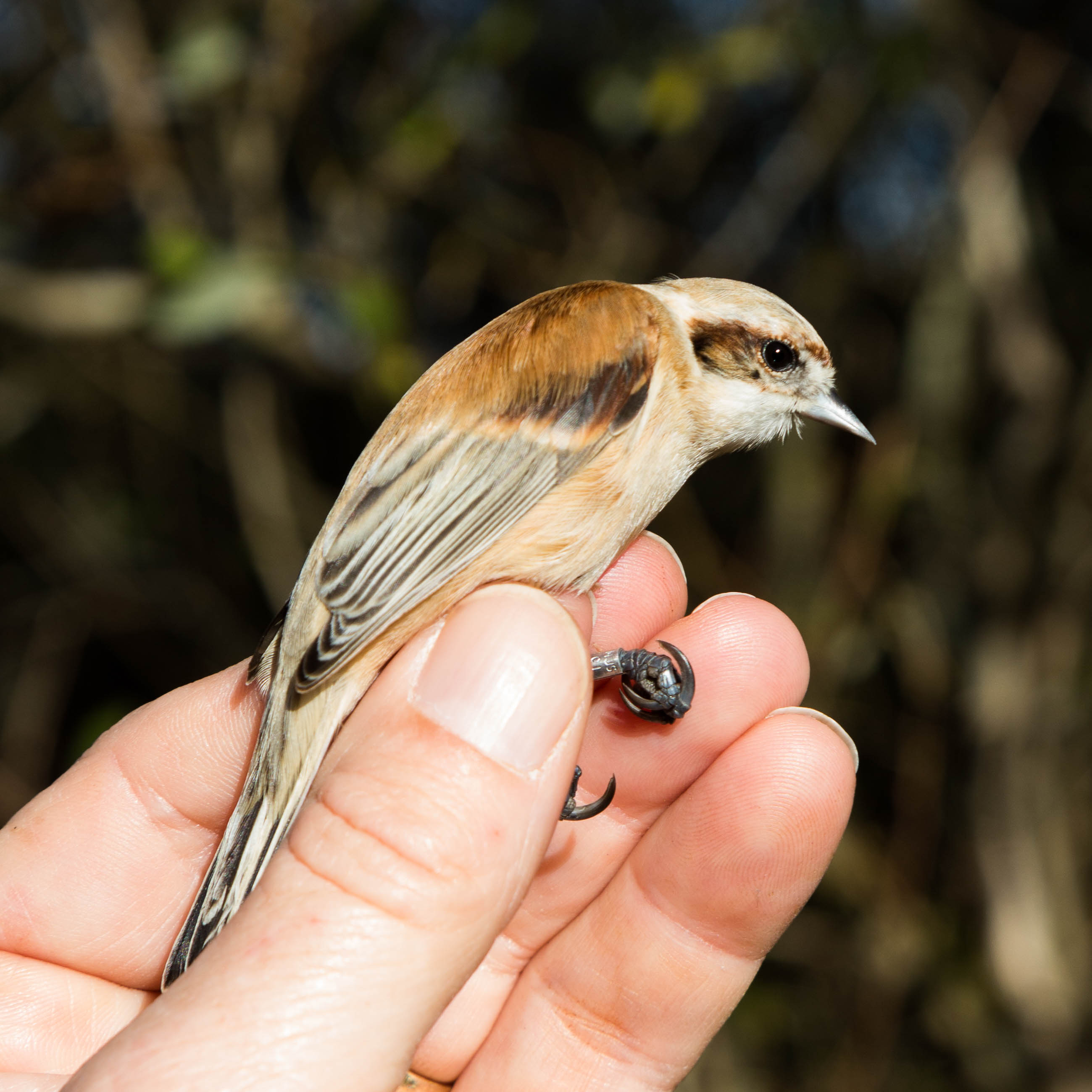
Penduline Tit – Mannez nature reserve – Photo – Paul Veron

Yellow-browed Warbler – Essex Farm – photo – JH – ABO

Male Lesser Redpoll – Essex Farm- photo – JH – ABO
Above two photos of Lesser Redpoll illustrating one of the aging criteria for this species. The photo on the left (tail feathers narrower with more pointed tips) is a 2017 hatch bird, the one on the right, (broader tail with more rounded tips) is an adult.
29th A grey Plover in Braye Bay and a Redshank in Longis Bay. Late afternoon a Mistle Thrush (an unusual migrant here) was on top of the conifers outside the Obs. The Same 2 Sandwich Terns in Longis bay and a further 3 in Braye Bay. Just over 100 birds ringed today brought us to over 1000 in 5 days.
Many thanks to Dr. Manuel Schweizer who reported a sighting of one of our Lesser Black-backed Gull chicks, originally ringed on Burhou island 09/07/16, seen in Switzerland 07/10/17 ! This bird was already interesting because it had been reported in Castellon, Spain 03/11/2016. A few of our Channel Islands born chicks appear to winter in eastern Spain. It is far more common that they are reported in West, South and Central Spain. For the bird to now be seen in Switzerland is unprecedented. Where this bird will go next?! (thanks to Paul Veron for a summery of this data/information)
Lastly, belated news just in of one of the Storm Petrels ringed in 2016 on Burhou Island being re-trapped on Skokholm Island Dyfed. We originally ringed the bird on 29th July 2016 and just 16 days later it was caught 306km away on Skokholm. We’ve had a few exchanges with Storm Petrels re-trapped along the French coast and a handful at the Lizard estuary Cornwall but this is our first to the welsh coast. It’s a real privilege to be at the cutting edge of enhancing the understanding of the movements of Alderneys Storm Petrel colony, amongst one or two other birds !!

